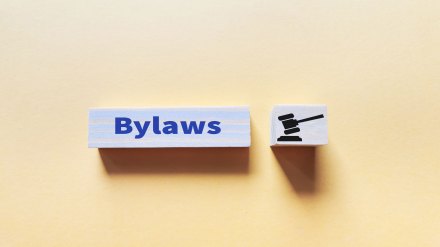An insurance company issued a homeowner’s policy to a married couple (the “Taylors”) covering occurrences at their residence. The couple had two minor boys who lived with them. The policy provided coverage for any “occurrence,” defined as bodily injury or property damage caused by an accident. The policy contained the following section regarding the providing of notice of potential claims to the insurer:
In case of an accident or occurrence, the insured will perform the following duties …
A. Give notice to us or our agent as soon as practicable setting forth:
- identity of the policy and insured;
- reasonably available information on the time, place and circumstances of the accident or occurrence; and
- names and addresses of any claimants and available witnesses.
Case study
Mrs. Taylor invited her sister and her family to live with them. The sister’s five-year-old minor daughter (the “victim”) had been sexually molested by a babysitter and the family wanted to move away from the home where the crime occurred. The sister’s family eventually moved out of the home. Several years later, the victim informed her mother that she had been sexually molested by one of the Taylors’ boys when they lived together. The sister threatened to sue the son, who was now an adult, but ultimately chose not to do so after the son agreed to pay the victim’s counseling fees.
Notice came four years after alleged incident
Over time, the relationship between the two families deteriorated, and four years after the initial disclosure of the abuse the sister gave the Taylors notice of her intention to sue their son. It was then, for the first time, that the Taylors notified their insurer of a possible claim. A few weeks later the sister sued the Taylors’ son, and, to the Taylors’ surprise, she also sued them.
The lawsuit alleged that the Taylors’ son sexually molested the victim in his home, and at the church his family attended, during the time they lived together. The sister claimed that the Taylors were aware that their son was molesting the victim, but did nothing to stop him. The lawsuit sought compensatory damages of $3,000,000 and punitive damages of $350,000.
The Taylors forwarded the lawsuit to their insurer, expecting the insurer to provide them with a legal defense and payment of any verdict or settlement. To their surprise, the insurer denied coverage on the ground that the Taylors had failed to notify it of the occurrence “as soon as practicable,” as required by the insurance policy. The insurer asked the court to confirm that it had no duty to defend or indemnify the Taylors.
The court’s ruling
The court began its opinion by noting that “the courts have consistently held that policy provisions requiring that written notice of an accident be given ‘as soon as practicable’ or ‘immediately’ are reasonable and enforceable, and are a condition precedent which, if not complied with, bar recovery under the policy.” Such provisions “only require that the insured act within a reasonable time, considering all of the circumstances.” The question, therefore, was whether the Taylors complied with the policy’s notice requirement by providing notice within a reasonable time under the circumstances.
The court concluded that the Taylors failed to give notice “as soon as practicable,” and therefore their insurer had no legal obligation to provide them with a defense of the lawsuit or pay any portion of a verdict or settlement. It observed: “They were aware of the allegations against [their son] in 2002, but never informed their insurer of these allegations until 2007. A delay of nearly five years is, as a matter of law, unreasonable.”
The court stressed that “the duty to notify arises when an insured learns of an occurrence that, from an objective standpoint, may potentially lead to a claim against the insured that might implicate his or her policy.” It added that the duty to notify is not triggered “only by the anticipation of valid claims that may be covered; instead, the duty of notice is broader; it extends to incidents sufficiently serious as to lead a person of ordinary intelligence and prudence to believe that any claim arguably covered by the policy may be brought, even claims that may ultimately fail or that the insured may believe are not valid in law or fact.”
The court‘s conclusion
In summary … the Taylors were bound by the policy to give notice as soon as reasonably practicable after learning of the sexual molestation allegation. This is so because these allegations were very serious—they alleged the sexual molestation of their niece, by their son, in their home. Such allegations are sufficiently serious to lead a person of ordinary intelligence and prudence to believe that a claim might be brought against them and their sons …
Of course, this does not mean that insureds are required to anticipate every conceivable claim that may be brought. All that is required is that the insured notify the insurer of an occurrence where a reasonable person, based on the facts of the occurrence known to the insured, would anticipate that a claim might be brought that would implicate the policy. This duty of the insured to notify the insurer of occurrences that might give rise to invalid claims is consistent with the duty of the insurer to defend the insured against such claims, as the duty to defend is broader than the duty to indemnify.
Importance to church treasurers
Most insurance policies impose on the insured a duty to promptly notify the insurance company of any potential claim. Failure to comply with this condition can result in a loss of coverage. Be sure you are familiar with the notice provisions in your church’s insurance policies, and comply with all of the relevant requirements. Pay special attention to the following considerations:
Timely notice
Provide the insurer with notice of an accident or occurrence within the time limits specified by the relevant policy. It is common for policies to require the insured to notify the insurer of an accident or occurrence “as soon as practicable,” or “immediately.” In this case, the Taylors failed to inform their insurer of the accident or occurrence until a lawsuit was filed naming them as defendants. This was nearly five years after they had reasonable cause to believe that an accident or occurrence had occurred.
KEY POINT. The gravity of failing to comply with an insurance policy’s notice requirement is graphically illustrated by this case. The Taylors’ failure to provide their insurer with timely notice of the potential claim relieved the insurer of any legal duty to provide them with a legal defense of a $3,350,000 lawsuit or pay any portion of an adverse verdict or settlement. As a result, the Taylors had to retain and compensate their own attorney, and were solely responsible for any adverse verdict or settlement.
What triggers the notice requirement?
The duty to notify your insurer arises when you learn of an “occurrence” that, “from an objective standpoint, may potentially lead to a claim against the insured that might implicate the policy.” The court in this case stressed that the duty to notify an insurer is not triggered “only by the anticipation of valid claims that may be covered; instead, the duty of notice is broader; it extends to incidents sufficiently serious as to lead a person of ordinary intelligence and prudence to believe that any claim arguably covered by the policy may be brought, even claims that may ultimately fail or that the insured may believe are not valid in law or fact.”
KEY POINT. Church leaders should notify their insurer of a potential legal claim even when they are not certain that it is valid. Err on the side of caution. Remember, a failure to comply with the notice requirement can have disastrous financial consequences for the church.
The content of a valid notice
Your insurance policy will describe the information that needs to be communicated when notifying your insurer of a potential claim. The policy in this case required the insureds to notify the insurer of “reasonably available information on the time, place and circumstances of the accident or occurrence” and the “names and addresses of any claimants and available witnesses.”
Notifying your broker may not be enough
Many churches purchase their insurance through a local broker. Sometimes this person is a member of the congregation. Church leaders naturally assume that in the event of an accident or injury they can simply call this individual and everything will be “taken care of.” This is not always the case. A broker may not be deemed to be an “agent” of the insurance companies he or she represents, and accordingly when a church provides its insurance broker with notice of an accident or loss it is not necessarily notifying its insurance company.
If you notify your insurance broker of a loss, insist on a written assurance that he or she will notify the insurance company in writing within the period of time specified in the insurance policy. If you do not hear back within a week or so, contact the broker again to follow up. Better yet, the church itself should notify both its broker and insurance company. The insurance company’s address will be listed on your insurance policy. Ask the insurance company to provide you with written confirmation of receipt of your notice.
Written rather than oral notice
If your insurance policy requires written notice, then be sure you provide written rather than oral notice of a loss.
KEY POINT. Church leaders should be familiar with the insurance policy’s provisions regarding notification of the insurance company. Is written notice required? If so, how soon after a loss? It is essential that these provisions be scrupulously followed in order to prevent a loss of coverage.
If you change insurance companies, be sure to review the new insurance policy. Do not assume that it will contain the same “notice” provisions as your previous policy.
KEY POINT. The duty to inform your insurance company of an accident or loss arises when the injury occurs, and not when a lawsuit is filed. The purpose of the notice requirement is to give your insurance company sufficient time to investigate the incident and provide a defense.
Example. A pastor is informed by a parent that her minor child was molested by a church volunteer. The volunteer is questioned, and admits having molested the child. This incident represents a potential “loss” under the church’s insurance policy, triggering a duty to inform the church’s insurance company of the loss within the period of time specified in the insurance policy. The church should inform its insurance company immediately. It is very important that it not wait until a lawsuit is filed to notify its insurance company. Such a delay not only hinders the insurance company’s ability to investigate the incident and defend the case, but it also may result in loss of coverage under the policy. This could have disastrous consequences to the church.
This article first appeared in Church Finance Today, April 2009.



















